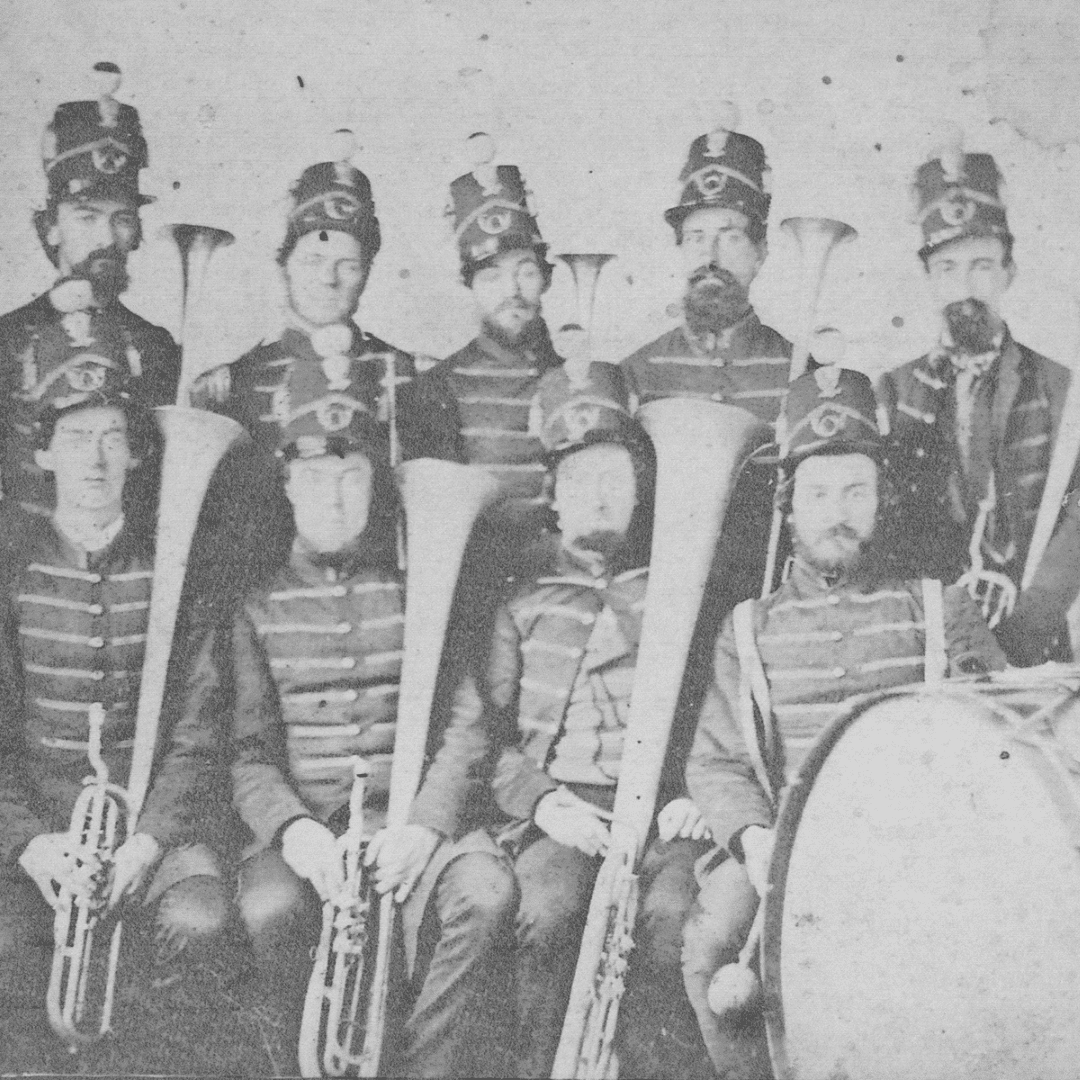By David Heighway, Hamilton County Historian
Hamilton County’s participation in the arts began fairly early, and part of that was due to a man named Robert Lindsey “Lins” Carlin (1832-1914). Carlin was born in Hamilton County, and while his first job was driving a wagon, he later made a living as a cabinet maker. He owned a furniture store in the 1860s where he also sold coffins and did undertaking.
However, music seems to have been his first interest. Accounts say that he started the first band in the county around 1850. The instruments would have had to have been brought in by wagon, as the band played for the arrival of the first railroad in March of 1851. The next we hear of the band is when they played for and contributed money to the shutting down of a notorious saloon in 1855. This was apparently a trend for them because they were part of the entertainment for a temperance “Pic Nic” in 1858.

1860 Silver Cornet Band
They put out an advertisement in 1860 that they had new instruments and were ready for hire. However, after a false report in the newspaper that they wouldn’t perform for Democrats, they put a notice in the paper that they would perform for anyone. The band held a concert in March to raise money to purchase uniforms. The photograph above was taken somewhere around this time, and all of the members are identified.

Noblesville Ledger December 21, 1870
Carlin served very briefly in the army during the Civil War (July 10-17, 1863) as a Corporal in the 109th Indiana Infantry. This was one of the regiments called up for Morgan’s Raid and was mustered out after the threat had passed. By 1874, his son William was also in the band and was following in his father’s footsteps by teaching bands around the area in places like Arcadia, Buena Vista (later Atlanta), and Zionsville.
Carlin moved to Indianapolis around 1875 and became a salesman for a piano company. He didn’t stop with his band work and organized the Ladies Cornet Band of Indianapolis. A notice in the Noblesville Ledger in May 24, 1879 said, “A brass band, composed entirely of young ladies, is creating something of a sensation at Indianapolis. The band will become a popular institution of that place.”
A few months after its formation, the band took a prize of $150 in the Class Two division at a band contest in Muncie. They were then invited to perform at a reception for the wife of President Rutherford B. Hays when the couple visited Indianapolis in October. Other women’s bands were formed in imitation, but Carlin had moved on.
By 1878, the Noblesville band had dissolved, and in 1879, a new one was formed by Jacob Thompson who had played cornet in Carlin’s band. In 1880, Carlin came back to Noblesville to help organize another band. Both bands played for the visit of Frederick Douglass in September of 1880. The two organizations eventually became known as the “old cornet band” and the “junior cornet band.”
Carlin had to give up his band work when he became a traveling representative of the Baldwin piano manufacturer. The band was eventually led by Harry Pontious and then by Frank Wild. For Memorial Day 1883, the band played on the balcony of the then-new courthouse tower. Later that year, they moved into practice rooms over Leonard Wild’s grocery store on 9th Street.
The bands played for the Fourth of July, Memorial Day (or Decoration Day as it was known then), soldiers’ reunions, fraternal lodge celebrations, and general concerts. They also played for anniversaries and birthdays. Eventually, these organizations faded, and a new group called the “Noblesville Military Band” was organized in 1888. Meade Vestal, who had played cornet in the junior band, became the leader, and after a reorganization in 1900, the band became an institution lasting until the middle of the 20th century
Carlin died in 1914, and his son William died in 1930. Although they lived in Indianapolis, there were articles in the Noblesville papers remembering both of them for their musical contribution to the community.

